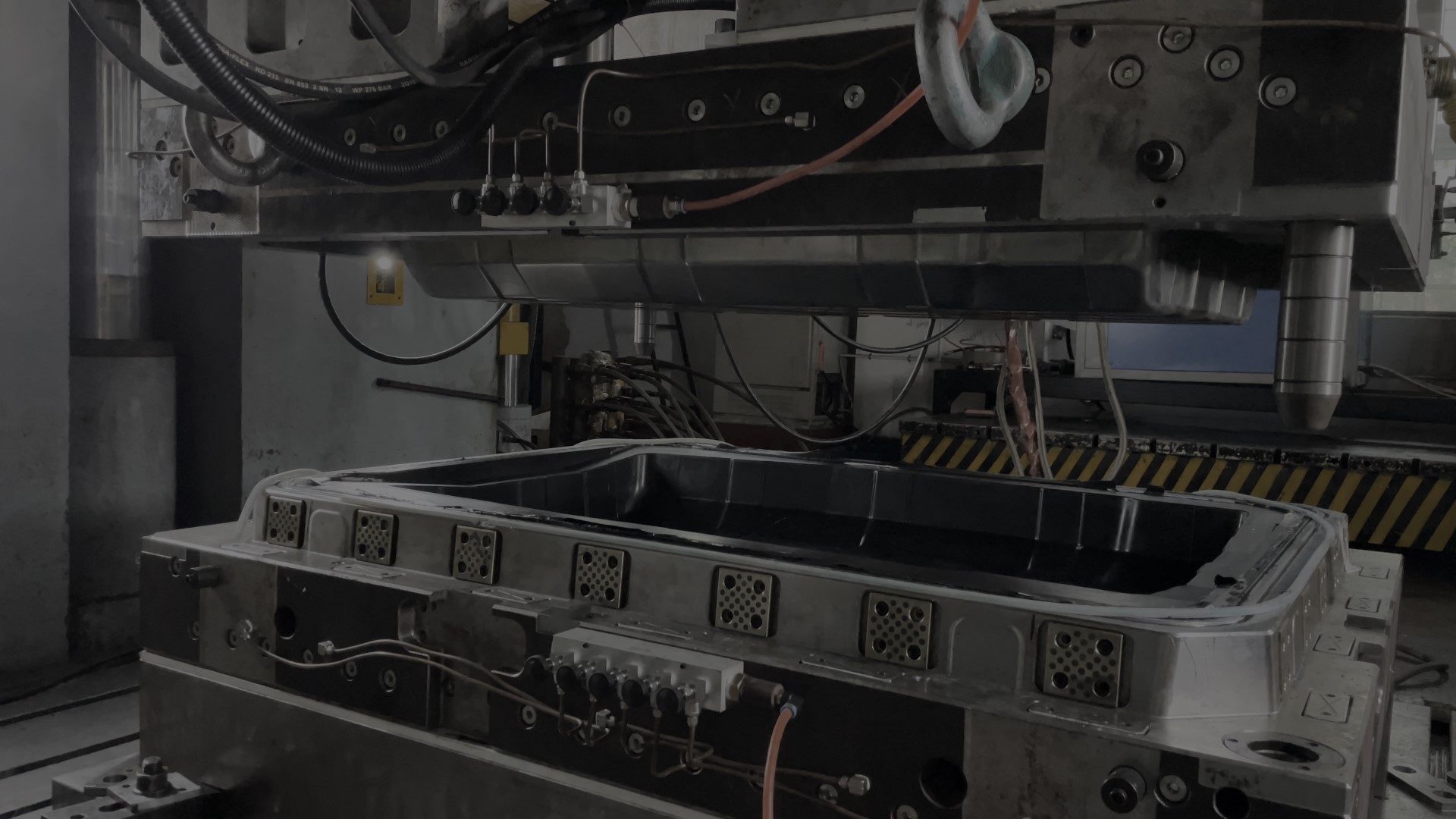
HP-RTM TOOLING .
- Suase /
- Composite Tooling /
- HP-RTM TOOLING
If you need to manufacture large parts with a high strength to weight ratio, resin transfer molding (RTM) might just be the process you need. Resin transfer molding is a form of composite liquid molding in which resin is mixed with a catalyst or hardener before being injected into a closed mold filled with reinforcing fibers.
RTM’s strength, durability and high glass-to-resin ratio make it perfect for creating large, strong parts. In addition, RTM is also a viable option for molding complex shapes, up to and including compound curves.
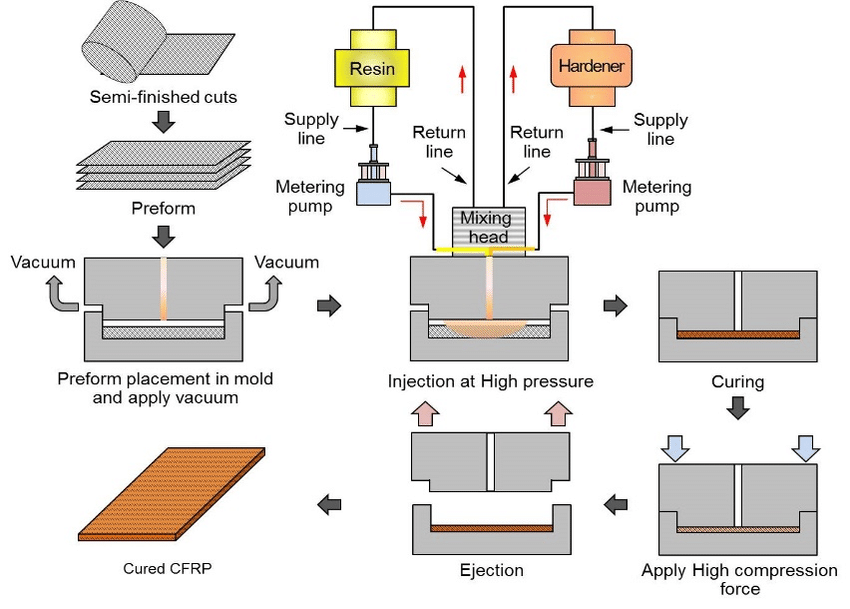
Process of Resin Transfer Molding
Resin transfer molding is a closed-mold process utilizing matched male and female molds. Molds for RTM processes can be made out of a variety of materials, including steel, aluminum, nickel or composite.
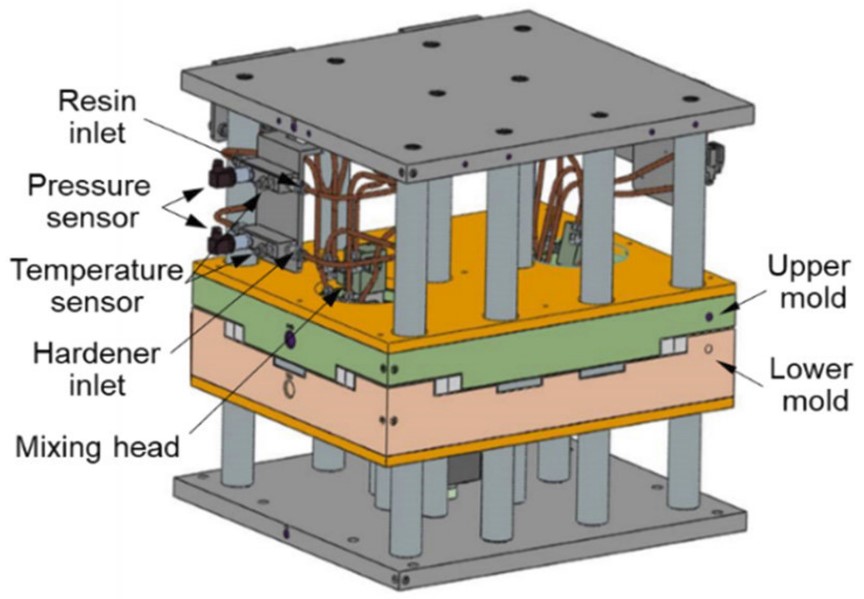
In transfer molding, the mold is filled with reinforcing fibers, often in the form of a matrix, before injecting the resin. The most common type of fiber used in this process is glass, though carbon fibers, Kevlar and even some organic fibers such as hemp may also be used.
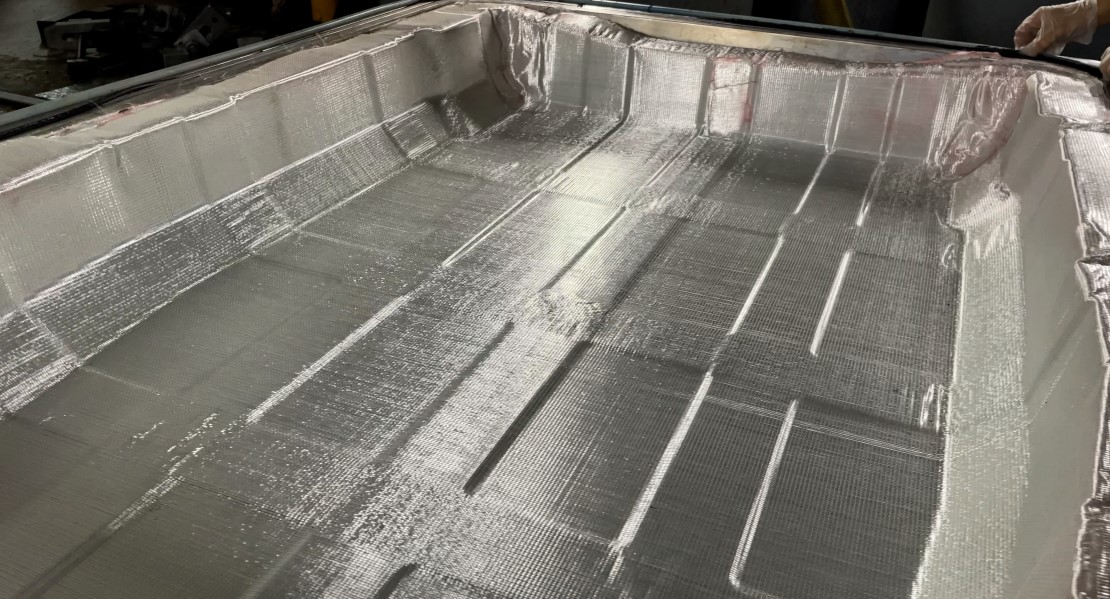
Once the fibers have been placed inside the enclosed mold, a liquid thermoset resin such as polyurethane is then injected. The resin saturates the fibers, creating a strong, durable product with an excellent bond between the two materials.
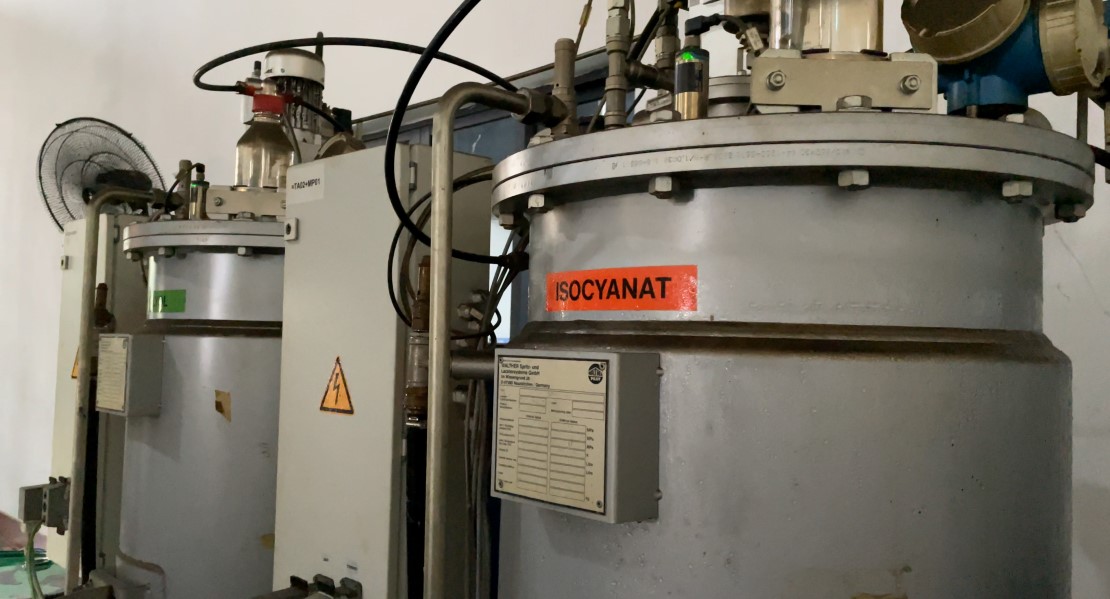
The mold is kept closed during the process using bolts, toggle clamps or a press. Typically, the mold is heated using a liquid heating system, with the average temperature used during RTM being 104 degrees Fahrenheit (40 degrees Celsius).? However, variations in resin chemistry can require different mold temperatures, which can also impact reaction times and overall molding cycle times.
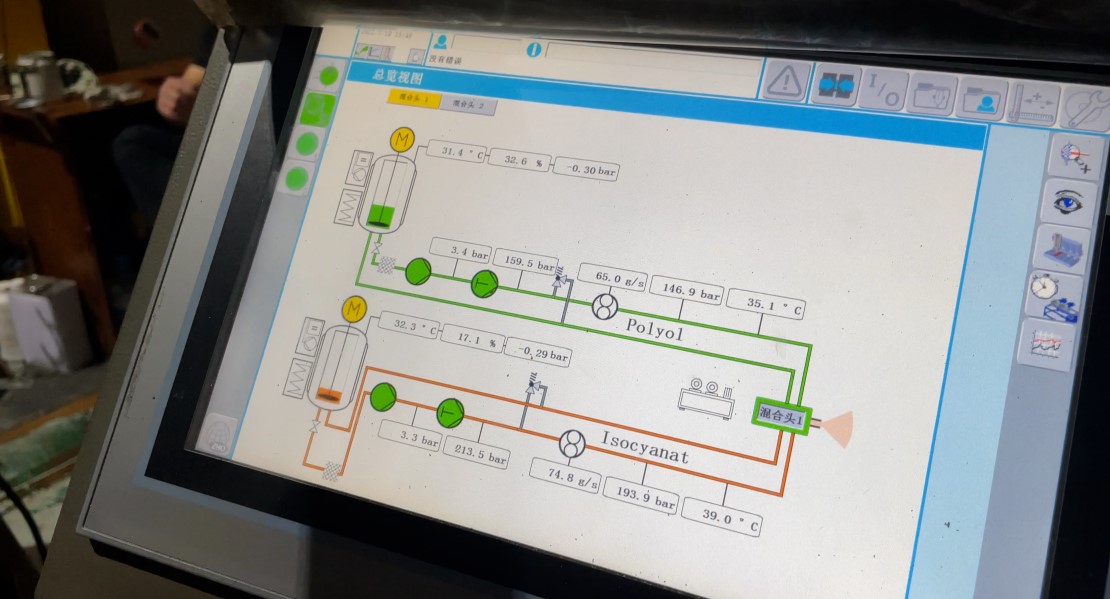
When compared to injection molding, RTM uses similarly low temperatures but lower amounts of pressure. The two processes have distinctly different cycle times, injection molding has quick cycle times (often measured in seconds), where RTM is longer (often measured in minutes). Like injection molding, RTM can deliver molded features on both sides of the parts, such as bosses and ribs.
There are also variations on standard resin transfer molding. HP-RTM is short for High Pressure Resin Transfer Molding. It refers to the use of high-pressure pressure to mix and inject resin into a vacuum-tight mold pre-laid with fiber reinforced materials and pre-installed inserts, and the molding process of resin flow filling, impregnation, curing and demoulding to obtain composite products.
About HP-RTM
HP-RTM is a new RTM process technology introduced in recent years for mass production of high-performance thermoset composite parts. It uses preforms, steel molds, vacuum-assisted exhaust, high-pressure mixing injection and the process of impregnating and curing resin to fibers under high pressure to achieve low-cost, short-cycle (high-volume), high-quality production. Compared with the traditional RTM, the HP-RTM process has the following advantages: First, the mold filling is fast, the wetting effect is good, the bubbles are significantly reduced, and the porosity is reduced; High stability and repeatability; third, using internal release agent and self-cleaning system, the surface effect of the workpiece is excellent, and the thickness and shape deviation are small. Low-cost, short-cycle (high-volume), and high-quality production can be achieved.
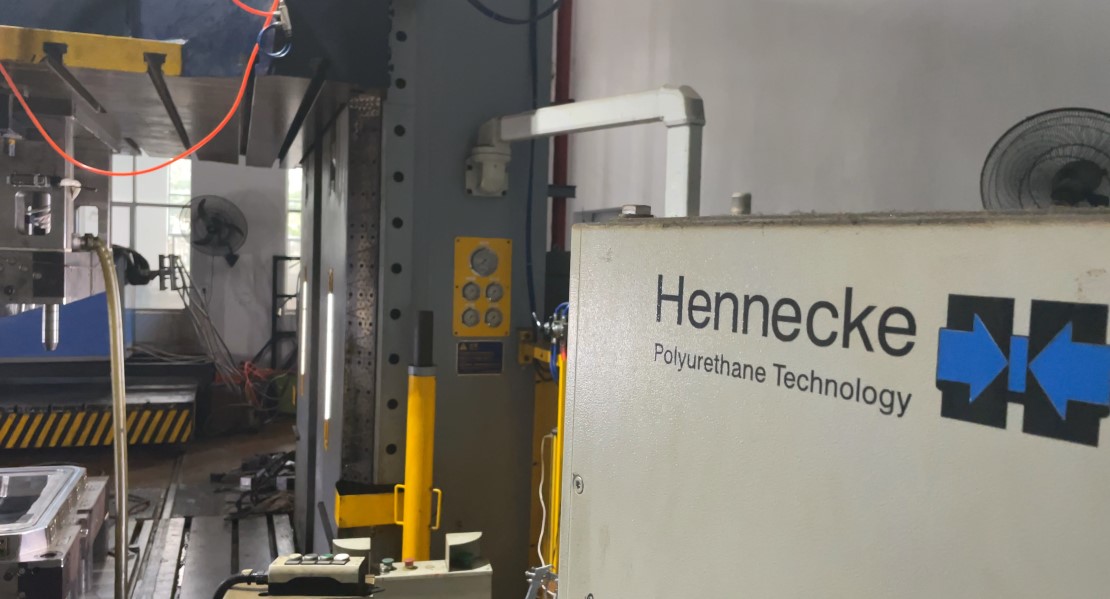
Features of HP-RTM
HP-RTM includes preforming, resin injection, pressing and trimming. Compared with the traditional RTM process, the HP-RTM process increases the post-injection pressing process, reduces the difficulty of resin injection and filling, improves the impregnation quality of the preform, and shortens the molding cycle. The specific process characteristics are as follows:
(1) The resin fills the cavity quickly. Larger clamping gap and higher injection pressure (1.0-15.0MPa), as well as low-viscosity resin, greatly increase the injection speed of the resin and shorten the molding process cycle (3-5min).
(2) The curing reaction rate of the resin is improved, and the curing cycle of the resin is shortened. The high-activity and fast-curing resin system is adopted, and the high-efficiency high-pressure mixing and glue injection equipment is used to make the mixing uniformity of the resin matrix better. At the same time, a high temperature environment is required during molding, which greatly improves the curing reaction rate of the resin.
(3) Use an internal release agent and a self-cleaning system. The self-cleaning technology of the injection mixing head is used, and the internal mold release agent component is added to the raw material, which effectively improves the cleaning efficiency of the equipment.
(4) The porosity content in the product is reduced, and the performance of the product is improved. The rapid vacuuming technology in the mold is used to effectively reduce the pore content in the product, improve the impregnation efficiency of the fiber, improve the interface bonding ability between the fiber and the resin, and improve the quality of the product.
(5) The technological difficulty of the product is reduced, and the quality of the resin-impregnated reinforcing material is improved. The combination of vacuuming and the compression molding process after injection reduces the difficulty of designing the injection port and exhaust port of the RTM process, improves the flow and filling ability of the resin, and the impregnation quality of the resin to the fiber.
(6) The thickness of the product and the dimensional deviation of the three-dimensional shape are low. In order to ensure the sealing effect of the mold, double rigid surfaces are used to close the mold, and at the same time, a large-tonnage hydraulic press is used for pressure, which improves the clamping force during the molding process and effectively reduces the thickness and shape deviation of the part.
(7) The product has excellent surface properties and quality. The use of in-mold spraying technology and high-finish molds enables the parts to obtain high-precision apparent quality in a very short time.
(8) Has high process stability and repeatability. The use of gap injection and post-injection compression technology greatly improves the filling and flowability of the resin, effectively reduces the probability of process defects, and has high process repeatability.
